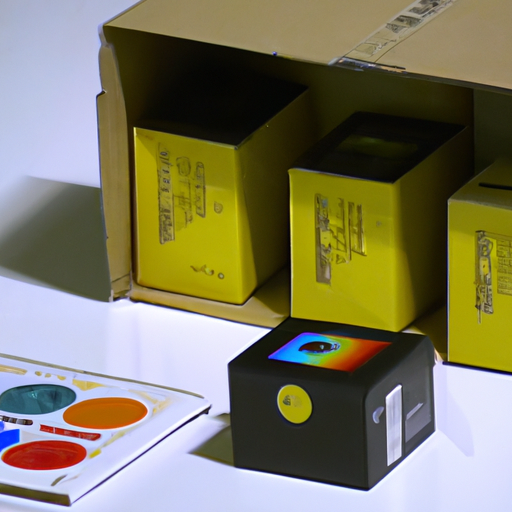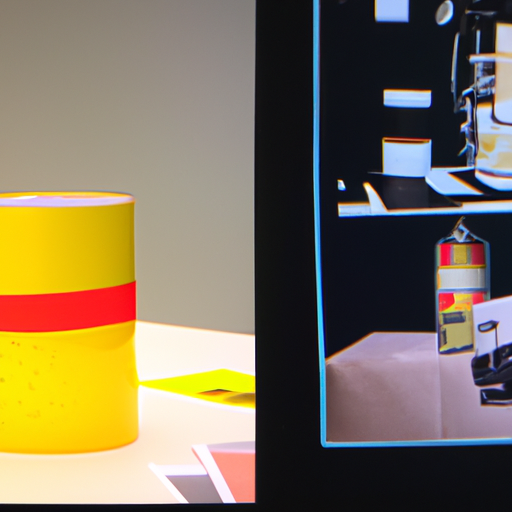
-
Table of Contents
- The Art of Packaging Prototypes: From Concept to Reality
- The Importance of Packaging Prototypes
- The Process of Creating Packaging Prototypes
- 1. Concept Development
- 2. Sketching and Rendering
- 3. Material Selection
- 4. 3D Printing and Prototyping
- 5. Testing and Refinement
- 6. Production and Manufacturing
- Case Studies: Successful Packaging Prototypes
- 1. Apple’s iPhone Packaging
- 2. Coca-Cola’s “Share a Coke” Campaign
- 3. Nike’s Air Jordan Shoe Boxes
- The Future of Packaging Prototypes
- Summary
The Art of Packaging Prototypes: From Concept to Reality

When it comes to product development, packaging plays a crucial role in attracting customers and conveying the brand’s message. Packaging prototypes serve as a bridge between the conceptualization phase and the final product. In this article, we will explore the art of packaging prototypes, from the initial concept to the realization of a tangible design.
The Importance of Packaging Prototypes
Packaging prototypes are physical representations of a product’s packaging design. They allow designers, marketers, and manufacturers to evaluate and refine the packaging before mass production. Here are some reasons why packaging prototypes are essential:
- Visualizing the Design: Packaging prototypes provide a tangible representation of the design concept, allowing stakeholders to visualize the final product.
- Evaluating Functionality: Prototypes help assess the functionality of the packaging, such as ease of use, durability, and protection of the product.
- Gaining Consumer Insights: Packaging prototypes can be used to conduct consumer testing and gather feedback, enabling companies to make informed decisions based on consumer preferences.
- Reducing Costs and Risks: By identifying potential issues early in the design process, packaging prototypes help minimize costly mistakes and reduce the risk of failure.
The Process of Creating Packaging Prototypes
Creating packaging prototypes involves a series of steps that transform a concept into a tangible design. Let’s explore the key stages of this process:
1. Concept Development
The first step in creating a packaging prototype is to develop a concept that aligns with the product and brand identity. This involves considering factors such as target audience, product positioning, and market trends. Designers work closely with marketing teams to ensure the packaging reflects the brand’s values and resonates with the intended consumers.
2. Sketching and Rendering
Once the concept is established, designers begin sketching and rendering the packaging design. This stage involves creating rough sketches and digital renderings to visualize the structure, shape, and graphics of the packaging. Design software and tools like Adobe Illustrator or 3D modeling software can be used to refine the design and create realistic representations.
3. Material Selection
Choosing the right materials for packaging is crucial for both aesthetics and functionality. Designers consider factors such as durability, sustainability, and cost-effectiveness when selecting materials. They may also explore innovative materials or printing techniques to create unique and eye-catching packaging.
4. 3D Printing and Prototyping
With the design and materials finalized, the next step is to create a physical prototype. 3D printing technology has revolutionized the prototyping process, allowing designers to quickly and cost-effectively produce accurate representations of the packaging design. This stage helps identify any design flaws or improvements needed before moving forward.
5. Testing and Refinement
Once the packaging prototype is created, it undergoes rigorous testing to evaluate its functionality, durability, and visual appeal. This testing phase may involve consumer focus groups, usability studies, and feedback from stakeholders. Based on the results, designers refine the prototype to address any issues or enhance its overall performance.
6. Production and Manufacturing
After the prototype has been thoroughly tested and refined, it is ready for production. Manufacturers use the finalized packaging prototype as a reference to mass-produce the packaging design. This stage involves selecting the appropriate production techniques, such as offset printing, flexography, or digital printing, to ensure the design is accurately replicated on a large scale.
Case Studies: Successful Packaging Prototypes
Several companies have leveraged packaging prototypes to create successful and impactful designs. Let’s explore a few notable case studies:
1. Apple’s iPhone Packaging
Apple is renowned for its sleek and minimalist product packaging. The company’s packaging prototypes undergo meticulous design and testing processes to ensure a seamless user experience. Apple’s packaging not only protects the product but also enhances the overall brand perception, creating a sense of anticipation and luxury for customers.
2. Coca-Cola’s “Share a Coke” Campaign
Coca-Cola’s “Share a Coke” campaign, which featured personalized labels with popular names, was a huge success. The company used packaging prototypes to test different label designs and gather consumer feedback. The prototypes allowed Coca-Cola to refine the packaging design and create a highly engaging and personalized experience for consumers.
3. Nike’s Air Jordan Shoe Boxes
Nike’s Air Jordan shoe boxes are iconic and instantly recognizable. The packaging prototypes for these shoe boxes went through an extensive design process to capture the essence of the brand and create a unique unboxing experience. The prototypes helped Nike refine the packaging design, resulting in a visually striking and memorable product presentation.
The Future of Packaging Prototypes
As technology continues to advance, the future of packaging prototypes holds exciting possibilities. Here are some trends that are shaping the future of packaging prototyping:
- Virtual Reality (VR) and Augmented Reality (AR): VR and AR technologies allow designers and stakeholders to experience packaging prototypes in a virtual environment, providing a realistic and immersive preview of the final product.
- Smart Packaging: With the rise of Internet of Things (IoT), packaging prototypes can incorporate smart features such as sensors, NFC tags, or QR codes, enabling interactive and personalized experiences for consumers.
- Sustainable Materials: The demand for eco-friendly packaging is growing, and designers are exploring sustainable materials and innovative manufacturing techniques to create packaging prototypes that align with environmental goals.
Summary
Packaging prototypes are a vital part of the product development process, allowing designers and manufacturers to refine packaging designs before mass production. By visualizing the design, evaluating functionality, gaining consumer insights, and reducing costs and risks, packaging prototypes play a crucial role in creating successful packaging designs. Through the stages of concept development, sketching and rendering, material selection, 3D printing and prototyping, testing and refinement, and production and manufacturing, packaging prototypes evolve from a concept to a tangible reality. Case studies of successful packaging prototypes from companies like Apple, Coca-Cola, and Nike demonstrate the impact of well-executed packaging designs. Looking ahead, advancements in technology, such as VR and AR, smart packaging, and sustainable materials, will shape the future of packaging prototypes, enabling even more innovative and engaging designs.
